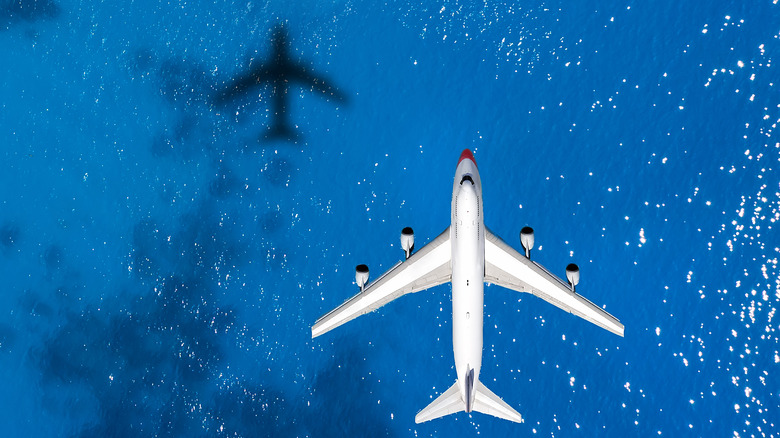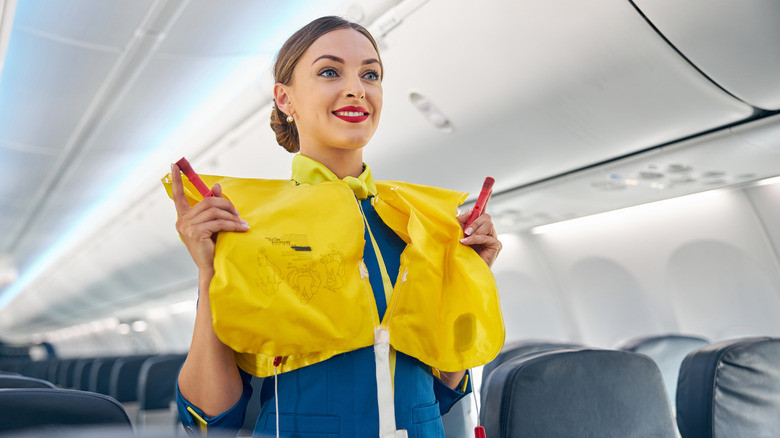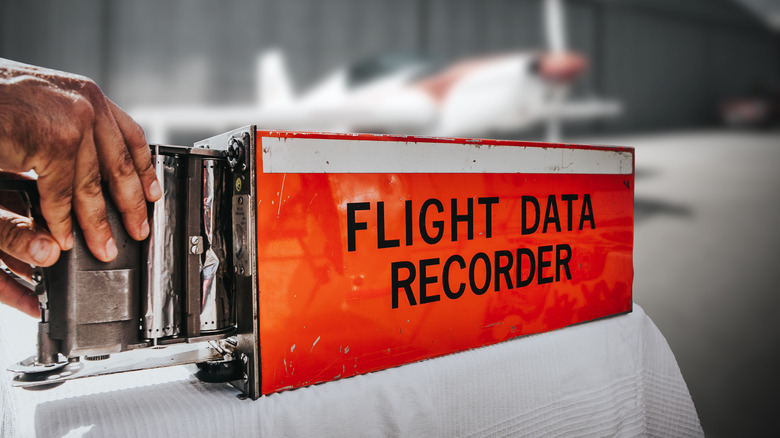Here's What Happens When Your Plane Makes An Emergency Landing On Water
In general, airplanes like to stay airborne and a lot has to go wrong for an emergency crash landing to occur. If an airplane does have to make a crash landing, though, the chances of a passenger actually dying are 1 in 11 million, according to NOVA. Those are pretty small odds. The reason for this comes down to a combination of factors but is mostly due to built-in redundancies. For example, an aircraft must be built to be able to fly with just one engine over water; there are two pilots in case one gets sick; flotation vests have two ways of being inflated; the inflatable evacuation slides can double as life rafts.
Though these safety procedures were put in place as the result of past emergencies and crashes, anxious passengers should know that crash landings on water — called "ditching" in the airline industry — are actually quite rare. This is largely because crashes, in general, are also rare. However, pilots avoid water landings where possible to avoid the chance of passengers drowning or suffering from hypothermia. As plane crashes go, though, ditchings have a very high rate of survival — 90%, according to Aviation Safety Magazine.
However, since these events are so uncommon, not many people know what happens or what to do if their plane crashes into a body of water other than what's repeated in the safety briefings at the beginning of your flight.
If crash landing over water, don't panic
There's nothing worse one can do than panic in the event of an emergency. Easier said than done, we know, but staying calm is key to making life-saving decisions. In the event of a crash landing over water, the first thing passengers should do is pay attention to the flight attendants. No, they are not glorified waitresses. Handling emergencies and keeping passengers safe is exactly what they are trained for and why it's so important to listen to their instructions.
Luckily the pilots are also trained for these kinds of emergencies and will always do their best to keep passengers safe. Pilots are trained to shut outer air vents to prevent water from seeping in and aim for calm waters. They will do their best to keep the plane parallel to the waves and try to land tail down for a smoother landing. This is also to prevent the plane from breaking apart and ensure it will float.
Once the plane is mostly at rest, flight attendants will direct passengers to grab their flotation devices and evacuate the airplane swiftly. If possible, the evacuation slides will be deployed since they also double as life rafts. The pilots will have sent out a mayday alert prior to the crash landing so help should be on the way.
Here's what happens after a ditching
Most crashes happen close to take-off or landing, so plane crash victims are rescued fairly quickly since they're close to land and in shallower waters. It should go without saying that passengers often need to be evaluated by a medic or doctor since crashes are pretty physically (and mentally) traumatic.
Recovery crews will do their best to salvage what's left of the plane if the water is not too deep, including evidence that will help them understand what caused the crash and passengers' personal items. While it might seem useless to retrieve water-logged suitcases, some people have things of sentimental value that they wish to get back. Also, it's reported that some items remain in good condition regardless of being submerged in seawater for some number of hours or days.
Following the ditching, an investigation will take place to understand better what went wrong. This is an incredibly important process since this helps make flying even safer and avoid future accidents, saving countless lives. Interestingly, the United Nations sets the rules on who investigates a crash should the event involve multiple countries, according to PBS.
This is determined by the location of the crash, the country where the plane originated and primarily operates from, as well as the passengers' countries of origin. Obviously, this can lead to a lot of countries being involved, so the U.N. has determined the country where the crash occurred leads the investigation while the others provide input and assistance where needed.


